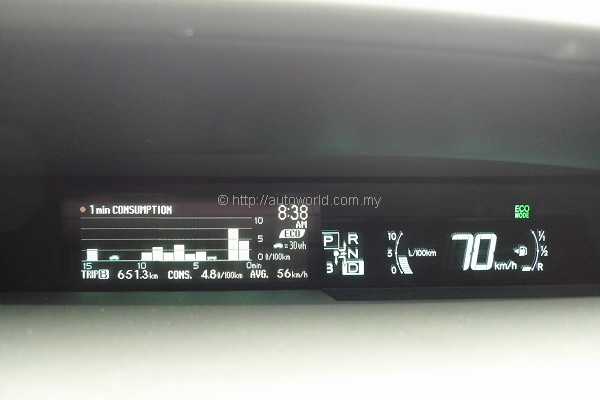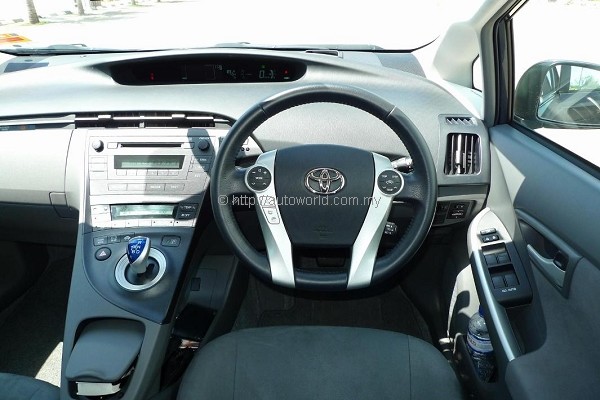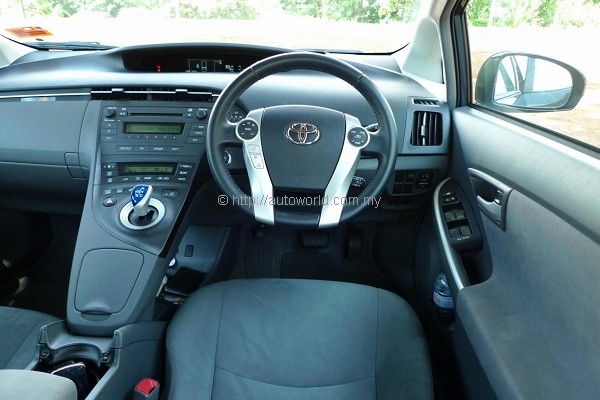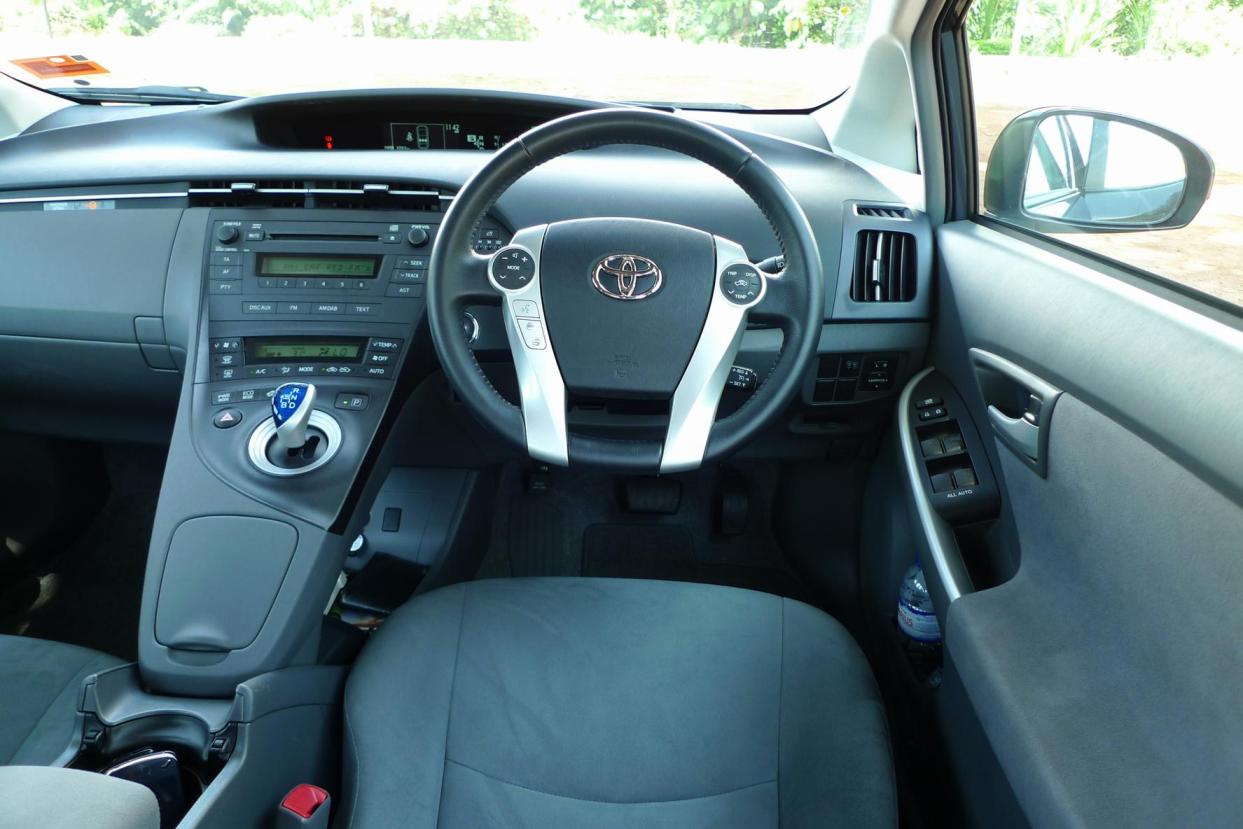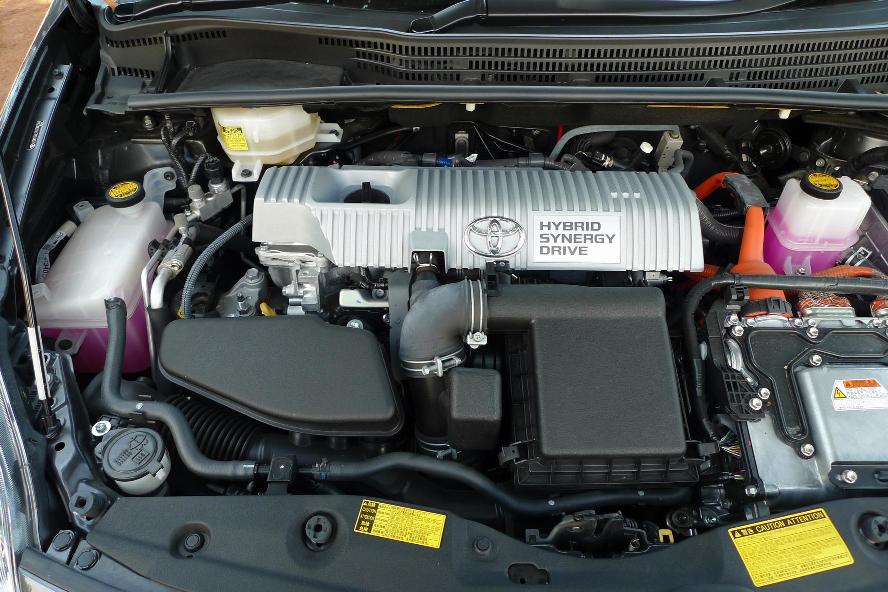Toyota Prius – Hybrid Car Gives 4.8 litres per 100 km Consumption
The Toyota Prius is a hybrid car produced by Toyota – in its second generation now, the Prius can cut normal fuel consumption by half or more, depending on how you drive. The key feature of the Prius is a petrol-powered 1.8 litre hybrid engine that is capable of energy regeneration (recycling energy that would otherwise be wasted and converting it into electricity, and used to power the car and its accessories), and other systems that minimize the usage of fuel.
Physically, the Toyota Prius is a compact sized 5-door hatchback, about the size of the Toyota Corolla, with a seating capacity of four to five persons – in terms of looks, its unique shape makes it quite distinctive, instantly recognizable as the Prius, Toyota’s most popular eco-friendly car. Personally, I find it quite attractive – this shape also seems to have set some sort of trend, as the new Honda Insight, soon to be launched here in Malaysia, has a similar silhouette.
Coupled to the Prius’ engine is an electric motor that also functions as a generator. The system also includes a battery bank, stored between the rear seat and the boot. The key component of the Prius hybrid system is its control unit, which organizes the energy utilization of the car.
When you start the Prius, the start button is just switching the system on. The engine does not turn at all under normal circumstances. Put the Prius into gear, and the control unit sends electrical power to start off the car. As long as the load on the batteries is low, the car continues to run on the battery. In my test car, I could get to as high as 40 km/h in this mode. At some point, depending on the condition of your battery, the Prius hybrid system fires up the engine, and you get a seamless change-over from electric to gasoline power.
Under normal driving conditions, the control unit senses your demands for power through your accelerator pedal. Under acceleration, the system adds more power to the engine by sending electricity to the motor. Lift off on the accelerator, and the control unit generates electricity to be stored in the batteries. Under braking, the system harnesses the kinetic energy from the brakes and turns it into electricity, again storing it in the batteries. When you stop, for instance at a traffic light, the engine turns off completely – the air-conditioner continues working using electricity from the battery.
On the dashboard, there are three modes for the driver to select. There is the ‘POWER’ mode – in this mode, the control unit adjusts the valve timing for more power, and supplements it with power from the battery, to give the Prius the equivalent power of a 2.4 litre engine.
In ‘ECO’ mode, the hybrid system works best, optimizing fuel supply, energy recovery, etc, etc to make the car as fuel efficient as possible. The third mode is ‘EV’ mode, which is short for Electric Vehicle – in this mode, the car runs on pure electric power – however, if you are above a certain speed, or if the battery level is low, it will not engage.
In terms of driving, the Prius drives like any Toyota – it handles well, has decent enough power, and more if you put it into ‘Power’ mode. If you drive the Prius in exactly the same fashion as you drive your current car now, you will save fuel just from the stopping and starting off modes – and every time you lift off or brake, the system automatically recovers energy. However, if you adopt some fuel saving driving techniques, you will achieve better results.
During my test session with the Prius, I used the basic fuel-saving techniques – minimal idling without moving, gentle acceleration, keeping the speed at around 110 – 120 km/h, anticipating traffic conditions, and keeping the air-conditioner temperature as high as possible. I achieved an average of 4.8 litres per 100 kilometres fuel consumption over a test distance of 653 kilometres. My best fuel consumption was 3.5 litres per 100 kilometres over 24.4 kilometres.
Concluding this, the Prius is a great car with a fantastic system that works – the fuel consumption figures I achieved attest to that. I will also state that if you want to get the best out of a Prius, then you must commit yourself to doing it, i.e., you must want to conserve fuel, and therefore, you have to drive it with a conscience.




